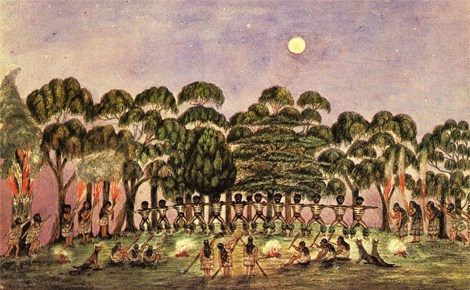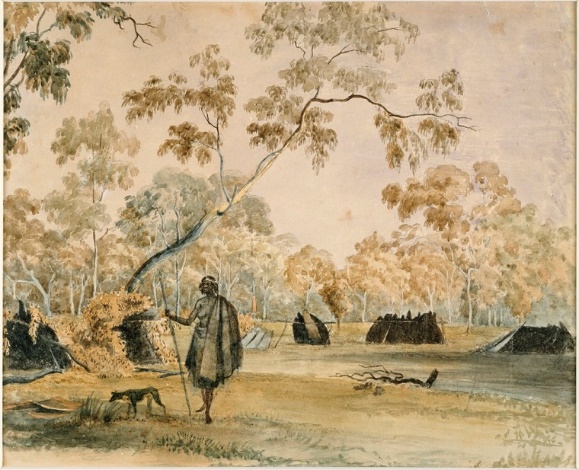The great thing about Australia Day is that it allows us the time to reflect on who we are. First Nation’s wise man Noel Pearson stated there were three narratives that made Australia – the story of the longest continuous living culture on Earth; the tale of the British colonial project and the institutions that have helped shaped our society; and thirdly the narrative of arguably the most successful multi-ethnic, multicultural nation on the planet.
Every time we wander around our neighbourhood, we can see the second and third narratives intertwined. But what of the first culture. Who lived in Sanctuary Lakes prior to the Europeans arrival and what do we know about them?
Indigenous historian Bruce Pascoe documented how Aboriginal peoples lived here for multiple millenniums before Cook arrived. By using fire, they established a cultivated form of land management, and carefully tended irrigation with simple straight forward farming and fish-trapping practices – constructed shelters made of clay-coated wood – and socially operating as a cluster of distinct but connected democracies.
When Captain Cook arrived at Botany Bay in 1770, living here on the land around Sanctuary Lakes was a generous family clan the Yalukut Weelam, the river people of Port Phillip. They were part of the larger Boon Wurrung tribe, and they spent their summer months living in a veritable food bowl between the Werribee River mouth and Koroit Creek.
A Yalukut Weelam corrobboree
The Yalukut Weelam people were semi-nomadic who moved on a regular, annual, set pattern around the fringes of Port Phillip Bay from the Werribee River in the west to St Kilda in the east. Within the limits of their territory they took advantage of seasonably available food resources. As Gary Presland described in his book “The Lost Land of the Kulin”
“Their way of life …was adapted to their environment in a number of ways. Their hunting equipment and techniques had been developed over a long period and were suited to the purpose. They had an intimate and detailed knowledge of their landscape. This knowledge was passed from one generation to the next. So well did they know their territory, and so efficient were they at getting all they needed, they had to work only a few hours a day for basic needs. This left a lot of time for other pursuits; much of which was spent in developing the non-material aspects of life. These aspects included typical human recreations such as music, dance, and the graphic arts. And of course, there was the spiritual side of life, which in Aboriginal culture was extremely rich.”
Indeed, for the Yalukut Weelam people the spiritual narration was central to their way of life. Based on ancestral Lore from the Dreamtime – they had to take care of their country. This meant moving around their land, preserving it and using it wisely – not exhausting resources. It also meant fulfilling social and spiritual obligations and rituals.
The Yalukut Weelam might spend a few weeks in the one place, depending on the local supply of fresh water and the available food resources. Major camps and traditional sites for corroboree, camping, hunting, lookouts, midden, and bush tucker, were usually set up close to permanent streams of fresh water, leaving evidence of their way of life. In the area between Skeleton Creek and Point Cook Homestead are five of these archaeological sites. including surface scatters, shell middens, isolated artefacts and burials. There is one particularly impressive shell midden site on the Cheetham wetlands adjoining the mouth of Skeleton Creek.
Small shelters by a creek
An early encounter with Europeans and the Yalukut Weelam was written by Reverend Joseph Orton
“Their clothes consisted of garments from possum and kangaroo skins, sewn together with the fibrous parts of the animal which they throw over their shoulders and which reached down to their knees. Their hair is black course and long, usually decorated with Kangaroo teeth, claws of animals and bones of fish.”
The First Nation did not use or manufacture metal tools, but had expertise in crafting stone. Their stone tools were used to cut wood and bark from trees, to fashion wooden tools, weapons and utensils, and to pound and grind food. Stone was also used to make spear barbs, spear points, and knives. A wide range of range of stone tools and artefacts have been found around our area including crude hand-held choppers and hand axes used for cutting into trees and butchering animals ready for cooking.
Yalukut Weelam used ground ovens to cook their food. They made the ovens by digging a large hole in the ground. Next a wood fire would be lit in the hole. The fire would burn down and large stones would then be laid over the fire. The stones would be heated up by the wood fire and its ashes. Roasting on hot stones was the basic technique for cooking flesh, including most meats such as Kangaroo, Emu and Fish.
There were no indigenous clay pottery traditions. For the Yalukut Weelam cooking vessels were largely unknown, water carriers were often carved from wood, and woven baskets were used for storing and transporting food around their territory.
However, clay had important ceremonial uses, decorating bodies and headdresses, and as pigment in ceremonial painting. It had pharmacological uses for absorbing toxins. Clay was also used to bind wood into shelters. And thus, clay had value and the Yalukut Weelam, thanks to the numerous creeks and waterholes, had an abundance and became part of their currency of barter among them and the less fortunate clans around Port Phillip Bay.
The continued growing presence of Europeans, their stock and ensuing changes to the land had a devastating impact on the Yalukut Weelam population. Their numbers, as in all parts of Victoria, dropped dramatically in the decades following European arrival. Introduced diseases (by far the biggest killer), violence, a declining birth-rate and increased infant mortality all played a part in this decline. Denial of access to places of importance for their material and spiritual wellbeing was perhaps the final devastating blow, to a way of life that had endured for at least forty thousand years.